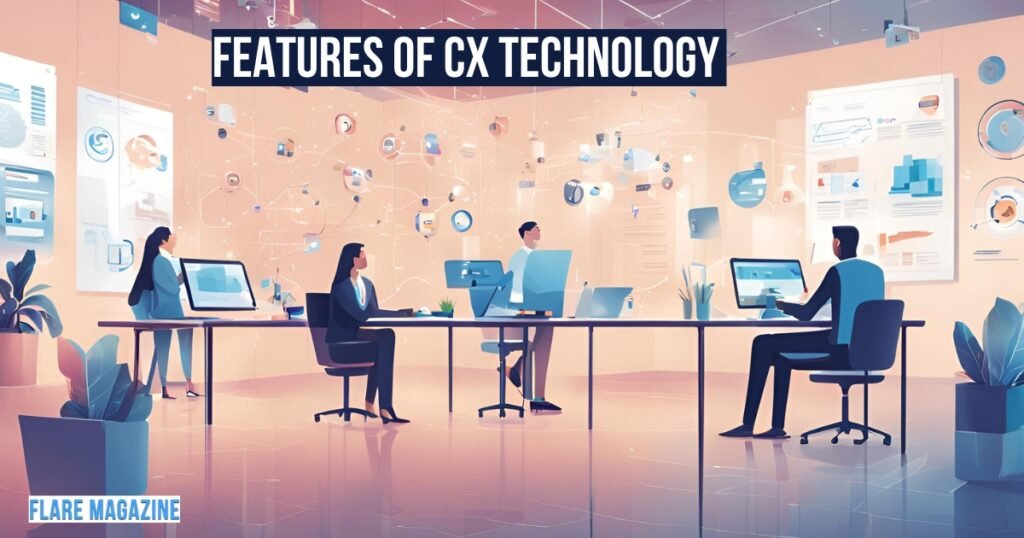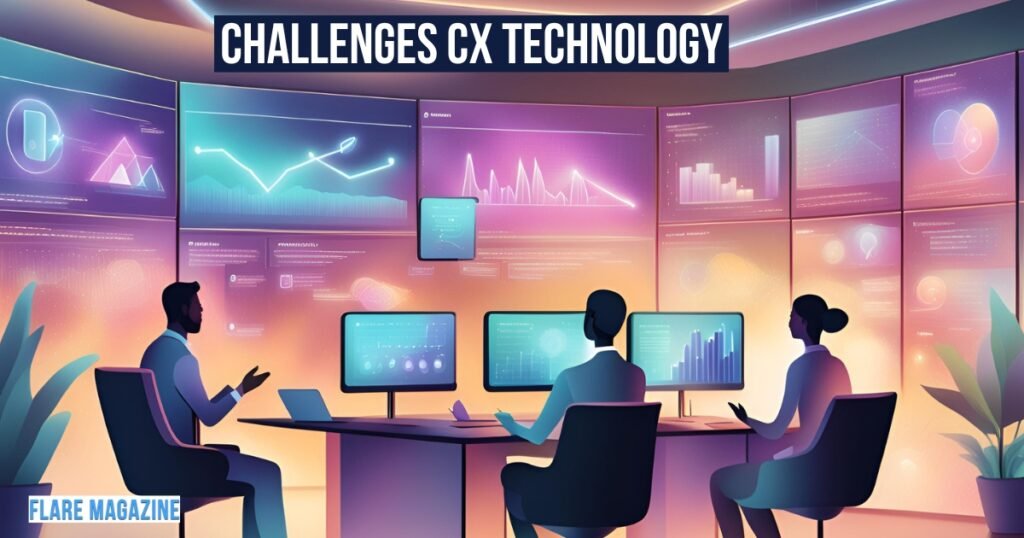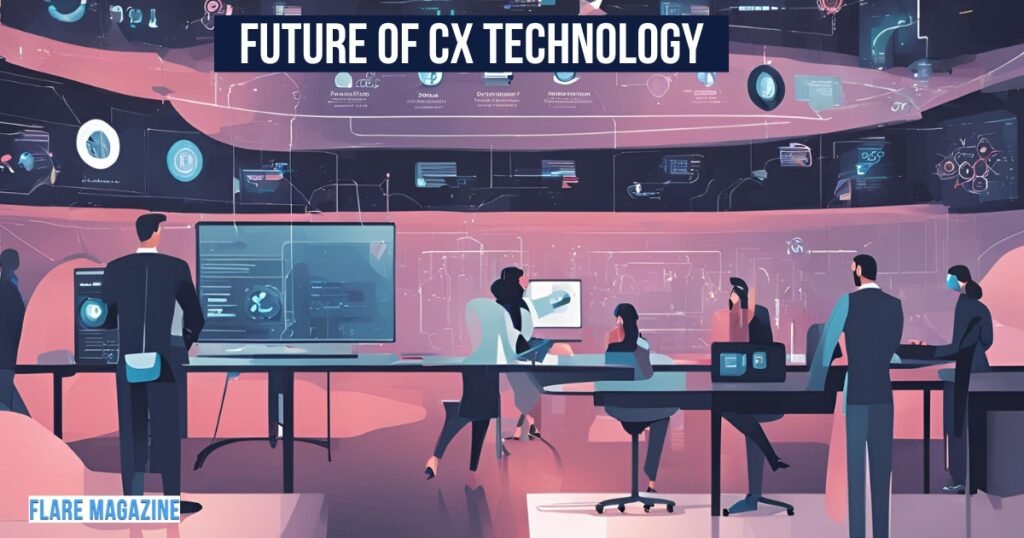In today’s cutthroat economy, customer satisfaction is crucial to business success. Satisfied consumers return for additional purchases, remember brands, and refer them to others. A smooth customer experience (CX) promotes business expansion and fosters loyalty.
CX technology is a potent instrument that aids companies in developing and improving satisfying client experiences. It makes understanding and satisfying customers’ needs easier at each purchasing process step.
This essay will provide an in-depth review of CX technology and its business advantages. You’ll discover how to use appropriate tools to improve client happiness and increase revenue. You’ll understand how to use CX technology for sustained success by the end.
What Is CX Technology?
Businesses can enhance customer interactions using customer experience (CX) technologies. By streamlining processes, these tools facilitate fulfilling client demands and fostering satisfying interactions. Businesses may provide quick service, simple navigation, and smooth customer experiences with the help of CX technologies. It may simplify the customer journey across all touchpoints, increase engagement, and automate routine tasks.
CX technology includes various tools and platforms designed to enhance customer satisfaction. Common examples include:
- Customer Relationship Management (CRM): Helps businesses efficiently manage and track customer interactions.
- Analytics Platforms: Provide insights into customer behavior to help businesses make better decisions.
- Artificial Intelligence (AI): Powers chatbots, personalization, and predictive analytics to improve customer support.
- Email Automation: Ensures timely communication and follow-ups with customers.
- Social Media Tools: Make engaging with customers and responding to feedback easier.
Creating smooth and customized experiences for customers is the primary objective of CX technology. Businesses may provide more personalized interactions, quicker responses, and a more pleasurable customer experience by optimizing their processes. Despite increasing satisfaction, this promotes repeat business and loyalty. Companies that use CX technology can differentiate themselves in a crowded market and forge closer bonds with their clients.
Also Read: What is Technology Apex? A Comprehensive Guide
Why Is CX Technology Important?
Improved Customer Satisfaction: CX technology helps businesses understand and solve customer pain points quickly and effectively. Tools like chatbots and automated responses ensure faster service, reducing customer frustration. By delivering seamless experiences, businesses build stronger relationships and increase customer loyalty. Satisfied customers are more likely to return and recommend the brand to others.
Increased Business Revenue: Great customer experiences directly impact a company’s profitability by encouraging repeat purchases and referrals. Studies show businesses with excellent CX earn 5–8% more revenue than competitors. Customers who feel valued spend more and are less likely to switch brands. CX technology helps businesses optimize interactions, driving higher sales and lifetime customer value.
Competitive Edge: CX technology gives businesses an advantage in a crowded market by improving service quality. Companies that use CX tools can respond faster, personalize interactions, and create better experiences than competitors. This differentiation helps brands stand out and attract more customers. Businesses investing in CX technology often become leaders in their industry.
Key Features of CX Technology

- Omnichannel Customer Support: CX technology offers a smooth and cohesive customer experience by integrating several communication channels. Customers don’t lose context when switching between phone, social media, chat, or email. This feature guarantees quicker responses and facilitates a smoother relationship regardless of the platform clients use.
- Real-Time Analytics: Real-time statistics provided by CX Solutions assist companies in understanding the preferences and behavior of their customers. These insights allow businesses to modify their plans quickly and make more informed choices. Businesses may boost client satisfaction and improve offerings by quickly recognizing trends and issues.
- Personalization: In CX technology, AI and machine learning assist in customizing interactions to meet the needs of each unique consumer. Businesses can send tailored messages, offers, and recommendations based on customer tastes and behavior. Customers feel valued and understood when their experiences are more personalized.
- Automation: CX technology includes chatbots and automated processes to efficiently handle repetitive chores. Chatbots cut down on client wait times by responding immediately to common questions. Automation saves time for both customers and businesses by simplifying processes like order tracking and follow-ups.
How CX Technology Works
Data Collection: CX technology collects customer data from various touchpoints, such as websites, emails, and social media. To build a complete profile, these tools track customer interactions, purchase history, and preferences. By gathering data from multiple sources, businesses better understand customer behavior.
Data Analysis: CX technology uses advanced tools to analyze and generate actionable insights after collecting data. Analytics platforms identify patterns, trends, and areas where customer experiences can be improved. This helps businesses understand customer needs and predict future behavior effectively.
Implementation: Businesses use insights from CX technology to create strategies that enhance customer experiences. For example, they can personalize communication, optimize customer journeys, and improve response times. Companies build stronger customer relationships and drive better results by acting on these insights.
Also Read: What is Demand Flow Technology?
Benefits of CX Technology
- Enhanced Customer Loyalty: Better customer experiences lead to long-term relationships and increased customer loyalty. Satisfied customers are more likely to return, recommend the business, and stay loyal over time. CX technology helps businesses consistently deliver personalized and seamless interactions, building trust and lasting connections.
- Streamlined Operations: Automation in CX technology reduces inefficiencies and simplifies complex business processes. Tasks like order tracking, customer support, and data management become faster and more efficient. By streamlining operations, businesses save time and resources, allowing them to focus on improving customer satisfaction.
- Improved Brand Reputation: Good customer experiences positively impact a company’s brand image and reputation in the market. Customers who enjoy seamless and helpful interactions are likelier to leave positive reviews. With CX technology, businesses can ensure consistent quality, strengthen their reputation, and attract new customers.
Challenges of Implementing CX Technology

Integration Issues:
Integrating CX tools with legacy systems can be complex and time-consuming for businesses. Older systems often lack compatibility, requiring custom solutions or upgrades. These challenges can delay implementation and increase the effort needed to make CX technology work effectively.
High Costs:
The initial investment in CX technology can be expensive, especially for small businesses with limited budgets. Costs include purchasing software, training employees, and maintaining the tools over time. Despite the benefits, many businesses struggle to justify the upfront expenses of CX technology.
Data Privacy Concerns:
Businesses must ensure compliance with data protection laws when using CX technology to handle customer data. Collecting and analyzing customer information raises concerns about privacy and security. Companies need to implement strict measures to protect data and maintain customer trust.
Examples of CX Technology in Action
Case Studies:
Many companies have successfully implemented CX technology to improve customer experiences. For example, Amazon uses AI-powered recommendations to personalize product suggestions based on customer preferences. Starbucks uses mobile apps to streamline ordering and reward customers, enhancing convenience and loyalty.
Industry-Specific Use Cases:
CX technology is used in various industries to meet specific needs:
- Retail: Retailers use chatbots and automated systems to provide instant support and recommendations.
- Healthcare: Hospitals use CX tools to improve patient interactions, appointment scheduling, and follow-ups.
- Finance: Banks use AI to personalize financial advice, helping customers make better financial decisions.
How to Get Started with CX Technology
Evaluate Business Needs:
Start by identifying your business’s CX gaps and understanding customer pain points. Assess your current processes to find areas needing improvement. Prioritize goals, like faster support or personalized experiences, to guide your CX strategy.
Choose the Right Tools:
Select CX tools that align with your business goals and fit within your budget. Look for platforms offering features like automation, analytics, and integration capabilities. Research options, compare reviews, and choose tools that can scale with your business.
Train Your Team:
Ensure your employees understand how to use the new CX technology effectively. Provide comprehensive training sessions and resources to help them adapt. A well-trained team ensures better execution and maximizes the technology’s potential for improving customer experiences.
The Future of CX Technology

Emerging Trends:
Advancements like AI, IoT, and AR drive innovation in CX technology. AI will enable deeper personalization and smarter automation for faster, more accurate customer support. IoT devices will create connected experiences, allowing businesses to anticipate customer needs in real time. AR will enhance interactions by providing immersive shopping or service experiences.
Predicted Impact:
These trends will significantly reshape how businesses interact with customers in the coming decade. Customers expect faster, more seamless, personalized experiences across all touchpoints. Businesses adopting these technologies will stay ahead of the competition and build stronger relationships.
FAQs
What does CX stand for?
CX stands for Customer Experience. It refers to how customers interact with and feel about a business. Businesses focus on CX to create positive experiences, improve satisfaction, and build loyalty through better services and personalized interactions.
What is a CX program?
A CX program is a business strategy to improve customer experiences across all touchpoints. It involves using tools and methods to understand customer needs, gather feedback, and implement changes. The goal is to create seamless, satisfying customer journeys.
What is CX and UX?
CX (Customer Experience) focuses on customers’ overall interaction with a business. UX (User Experience) is how users interact with a product or service, like a website or app. Both aim to improve satisfaction but target different aspects.
Conclusion
This article explained CX technology, its benefits, challenges, and how it transforms customer experiences. We covered how businesses can use CX tools to improve satisfaction, streamline operations, and boost loyalty. Practical examples and future trends showed the potential of CX technology in various industries.
Explore CX technology solutions to enhance your business’s customer experience and drive success. Evaluate your needs, choose the right tools, and empower your team to deliver seamless interactions. Don’t wait—invest in CX technology to stay competitive and exceed customer expectations.
CX technology is vital in building strong customer relationships and ensuring business growth. Embracing these tools creates personalized, efficient, and memorable experiences that customers truly value. Make CX technology a priority to secure your place in today’s competitive market.



